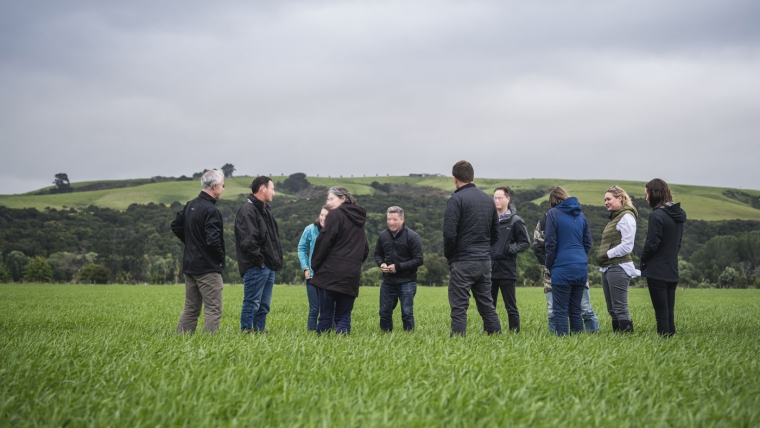
Classic farmer caution and the need to make up for enforced neglect appear to be deterring farmers from spreading their rural prosperity to stressed big cities.
As a result, New Zealand’s two-speed economy looks set to persist for a while longer. In the slow lane is the economy as a whole, which is beset by 5.2% unemployment and a 0.9% quarterly retraction in Gross Domestic Product (GDP). In the fast lane are farmers, who are selling their products overseas for far higher prices than previously.
Moreover, prices are expected to continue rising into next year. But this doesn’t mean farmers will automatically have spare money available to splurge, at least not for a while.
“A lot of farms had deficit budgets in 2023,” says rural accountant, David Bailey of Ōtorohanga.
“Over the last 12 to 15 months, they have started to catch up, but it’s going to need more time for some of them to get their balance sheets in order. They need 18 months more of good commodity prices to really get their accounts stronger, put fertiliser on, catch up on some maintenance and so on.”
Another rural accountant keeping a close watch on this issue is Shannon Harnett of Whakatāne. She says farmers are paying off debt rather than spending their money, and are focusing on a section of their debt kept on floating rates to enable quick repayments when times are good.
Like Bailey, Harnett adds farmers are also using their money to pay for costs that have accumulated in the past.
“In the last few years, everything has gone up, fuel, fertiliser, fence posts, basically all the materials you need for a farm,” she says. “Basically, all the material costs went up, especially over Covid, when there were also supply chain issues as well and those costs haven’t really gone down."
A graph from the Ministry for Primary Industries’ latest situation and outlook for primary industries report shows how costs have risen for farmers. While earlier big rises for fertiliser dipped back, other things like rates and insurance rose far faster than overall inflation.
Farmers paying these sorts of costs are thrilled to be earning more money to help pay for them. Bailey gives some examples of how prices for their products are helping out.
“A few years ago, when it hit rock bottom, wool was $1 a kilo, now, it is $3. Beef was $6 a kilo, it’s $9.50 today. And lamb has gone from $6 to $10 a kilo. Dairy was $7 to $8 a kilo of milk solids, now it is $10.16, from Fonterra.”
Adding to this is a steady rise in dairy farm productivity, as indicated by this graph from Dairy NZ.
So, if farmers are producing more milk, and getting paid more for each drop, then they should be happy, right? Probably. But with higher prices, come higher costs. Comments from a third rural accountant, Martyn Steffert of Cambridge, suggest milk production is a high stakes game.
“The 2024-25 breakeven price for dairy farmers was $8 54 per kilogramme of milk solids,” Steffert says.
“In the current year, we are looking at $8.57. Now, in 2025, they are getting $10.16. That only leaves a margin of $1.63 and farmers have got to pay tax on that.”
Steffert also suggests farmers’ universal exposure to uncontrollable things like the weather makes them even more reluctant to open their wallets too wide or too often. He cites the example of a dairy farm in Taupo which was subjected to a drought and was forced to buy in supplementary feed to make up for the cows' lack of grass. The cost came to $600,000. And there is a perpetual risk of something similar happening to any farm at any stage, anywhere.
There could be other things on farmers’ minds. Prices of commodities like beef in the US, which have been rising significantly for several years are forecast to plateau from next year onwards. Both Steffert and Harnett think issues like these mean it will take some time before rural prosperity moves into the big cities. They say farmers will keep paying down debt long before they go on a spending spree.
However, there is a game changer to this entire issue lurking just over the horizon. That is the impending transfer of an immense sum of money into farmers’ pockets when the sale of Fonterra’s consumer division becomes unconditional.
This consumer division includes brand names like Anchor and Mainland, and was sold to the French company, Lactalis, for $3.85 billion. That figure grew to $4.2 billion after incorporating a related deal in Australia. Fonterra’s management have pledged to give $3.2 billion of that money to their farmer shareholders, at a rate of $2 per share, tax free. This is dependent on farmer shareholders agreeing to the Lactalis deal at meetings at the end of the month, which is thought likely to happen.
Steffert thinks many farmers in the Waikato will be in line for payments worth around $300,000. He says a queue has already started forming from people interested in getting some of their hands on a share of this money.
“A lot of rural accountants are getting material in the mail from finance companies suggesting ways for farmers to spend some of their money from Fonterra," Steffert says.
“But I think most of them will use the money to pay down debt or perhaps buy new equipment, such as a new tractor. I don’t think you’ll find many of them spending the money on a big trip somewhere.”
Meanwhile, overall farm debt remains high at $64 billion, according to the Reserve Bank. It is, however, lower than debt owed by businesses and less than one sixth of housing debt. And its rate of growth has eased off to a level far lower than in the first decade of this century, and has been broadly negative for most of the past five years, as the following Reserve Bank graph makes clear.

We welcome your comments below. If you are not already registered, please register to comment.
Remember we welcome robust, respectful and insightful debate. We don't welcome abusive or defamatory comments and will de-register those repeatedly making such comments. Our current comment policy is here.